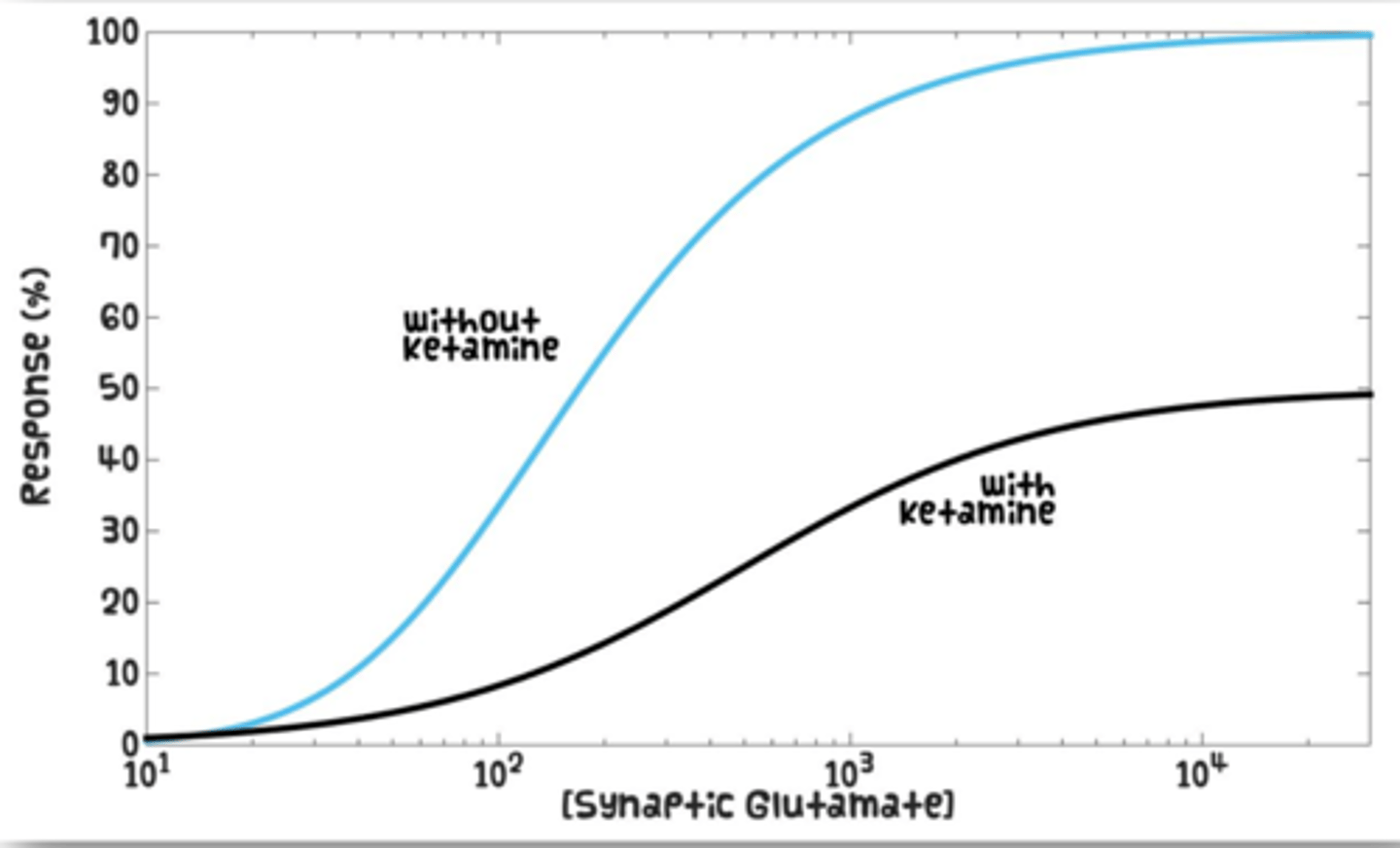Pharmacodynamics
1/13
There's no tags or description
Looks like no tags are added yet.
Name | Mastery | Learn | Test | Matching | Spaced |
|---|
No study sessions yet.
14 Terms
Sketch a graph of the Michaelis-Menten curve of reaction rate compared with substrate concentration
MM curve.
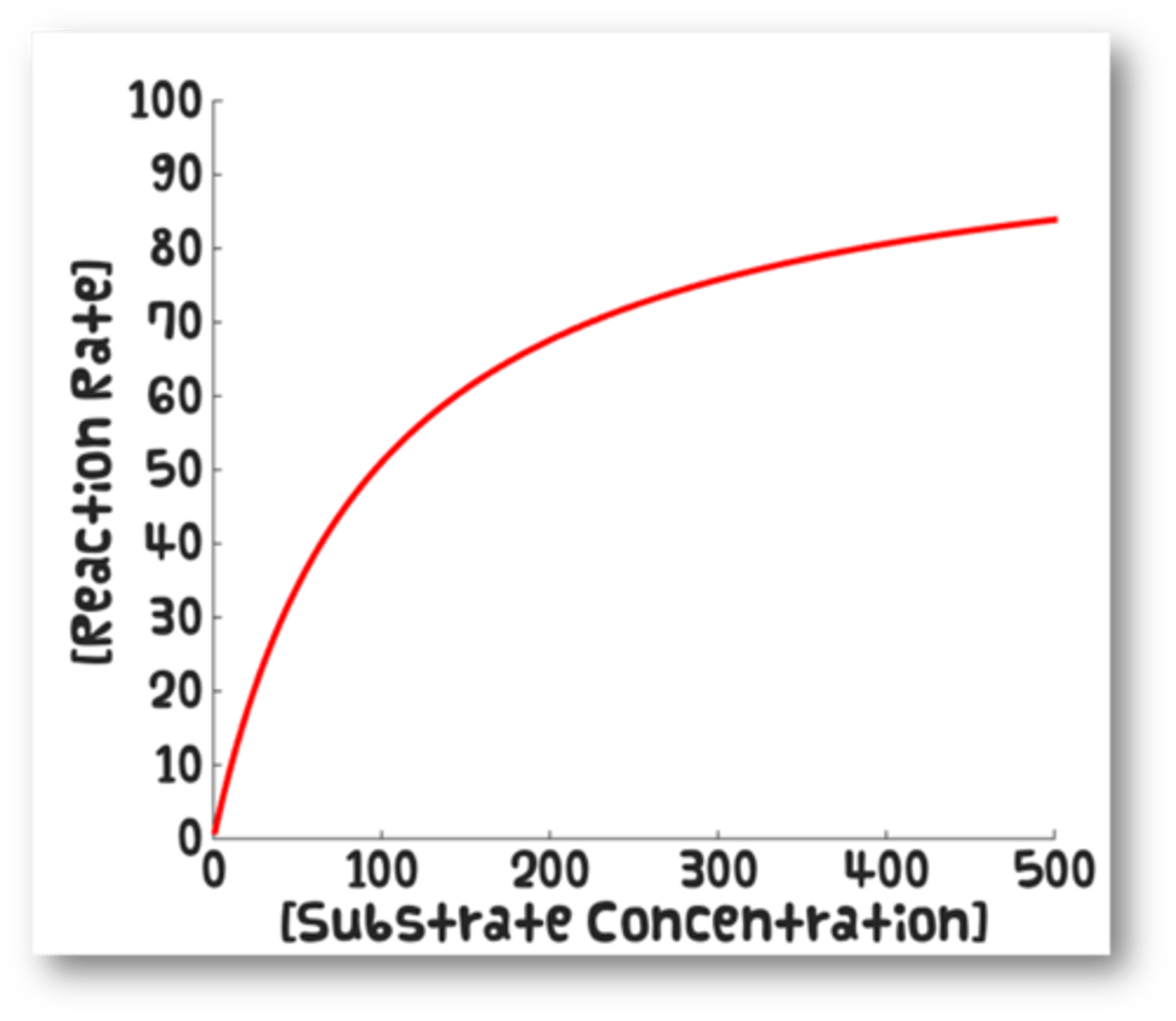
What is the Hill equation?
% = (100 x Conc) / (kd + Conc)
Used to work out the % of drug binding at a particular concentration.
Kd = dissociation constant
Draw a graph MM curve for a high affinity ligand and a low affinity ligand on the same graph
High and low affinity ligand.
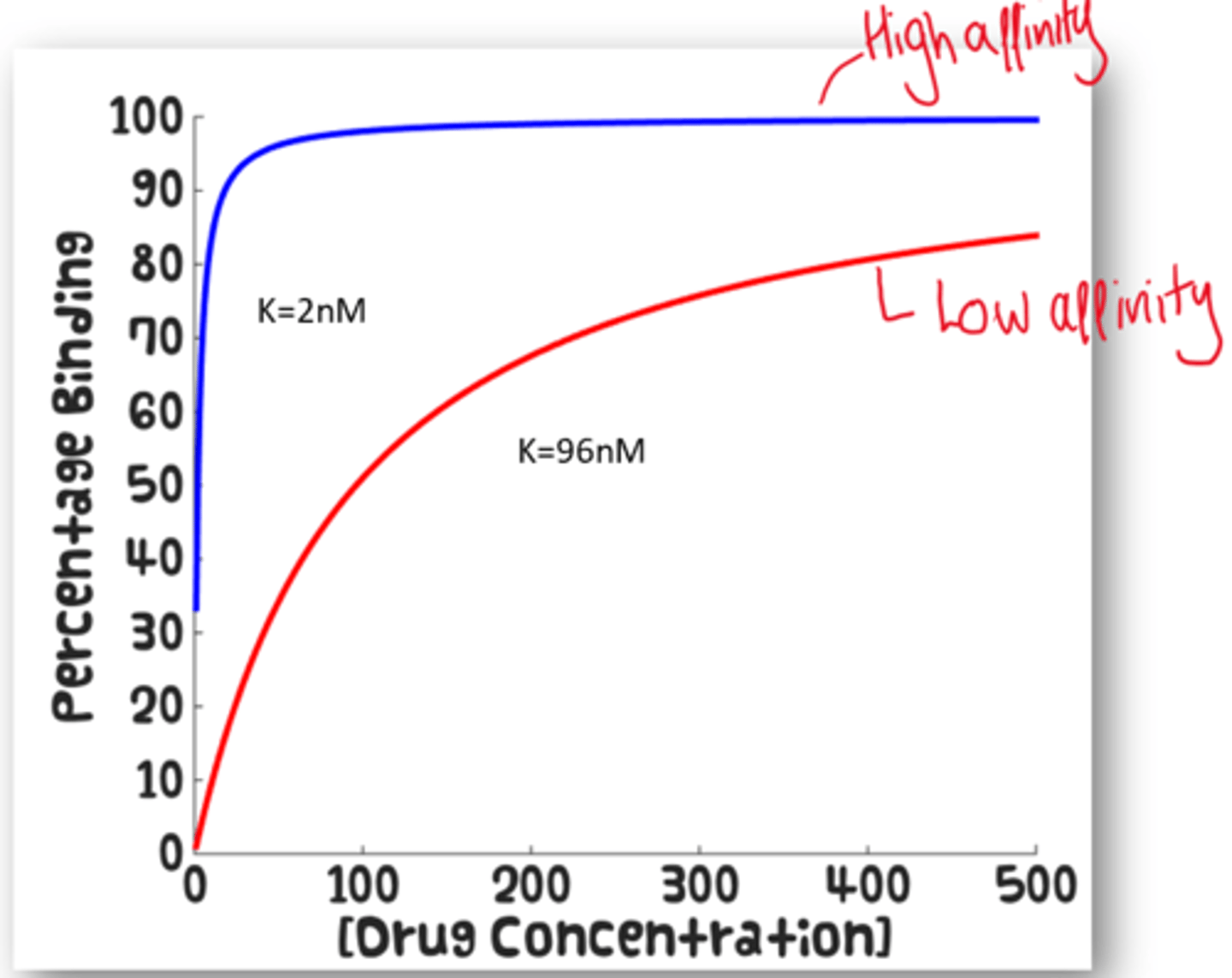
Describe where a high affinity ligand will appear in comparison to a low affinity ligand on an MM curve
-High affinity will appear further left (towards the y axis)
-This is because it has a lower Kd
Describe the relationship between Kd and ligand affinity
The lower the Kd the higher the ligand affinity.
Draw a graph to show a high efficacy drug compared to a low efficacy drug with response % on the y axis and concentration on the x axis
efficacy graph.
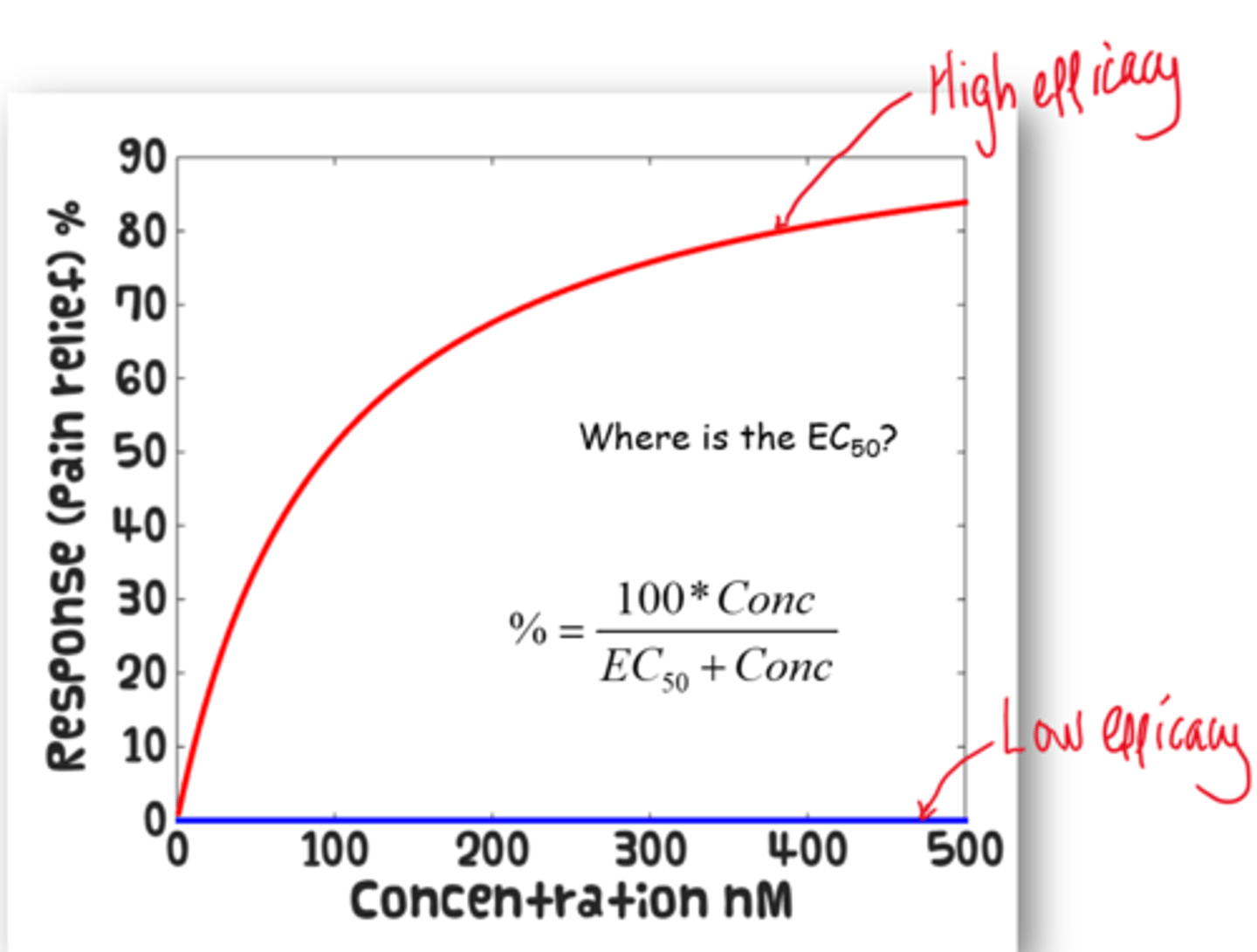
What is the EC50 of a drug?
The concentration of drug that gives 50% of the maximum response.
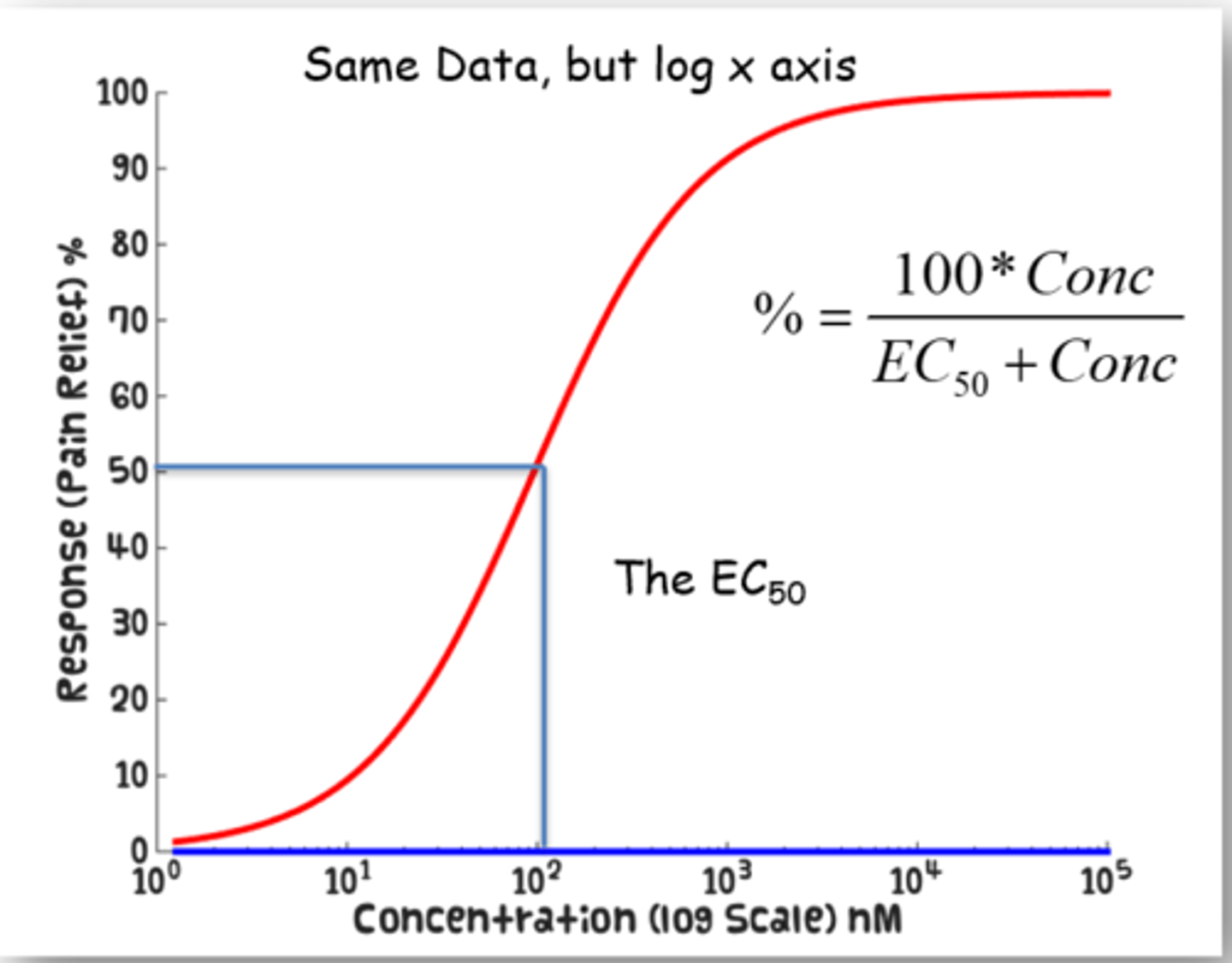
Reference range of similar opioid drugs
Graph shows that the blue Etorphine likely has the highest affinity as it has a higher EC50 than the others.
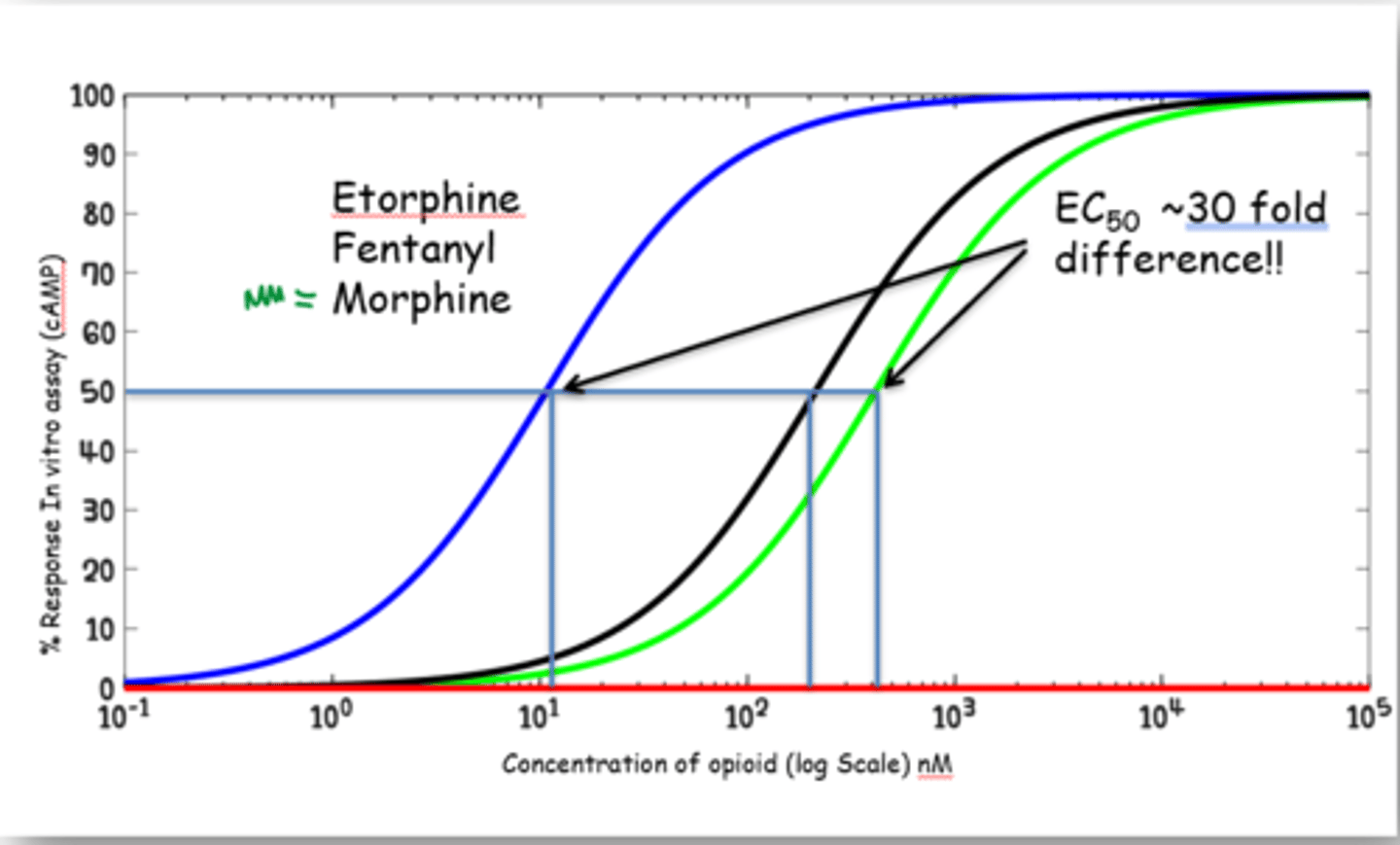
What is the potency of a drug?
The relationship between the concentration (of the drug) and the efficacy.
-I.e. a higher potency = a higher efficacy at a lower drug concentration
How do you define a partial agonist and how is it shown on a graph?
-Has agonistic effects but never reaches 100% efficacy
-Shown on a graph by not reaching 100%
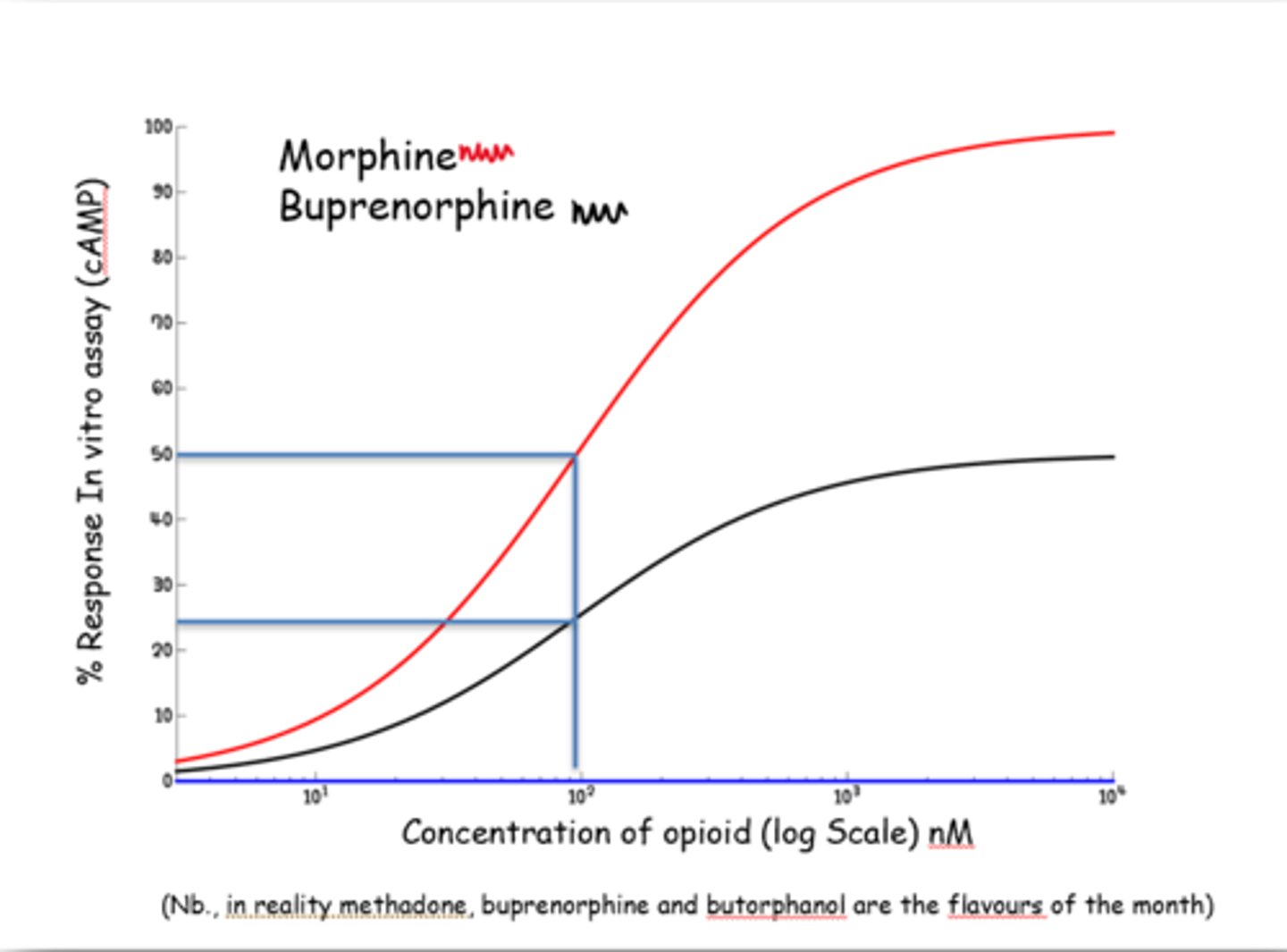
On what graph can you only truly measure a drugs affinity?
Binding curve (NOT Dose-response).
How can a partial agonist effect the activity of an agonist? What are the implications of this?
-If you prescribe a partial agonist before prescribing an agonist, the agonist will be competitively inhibited by the partial agonist as it is saturating the binding site
-This means that the agonist will never reach full efficacy as the partial agonist predominates until it becomes metabolised
What is the effect of a competitive antagonist?
Causes the original drug to reach Emax slower, but can still reach it with an increase in drug concentration as the drug outcompetes it.
-I.e. Shift the curve to the right
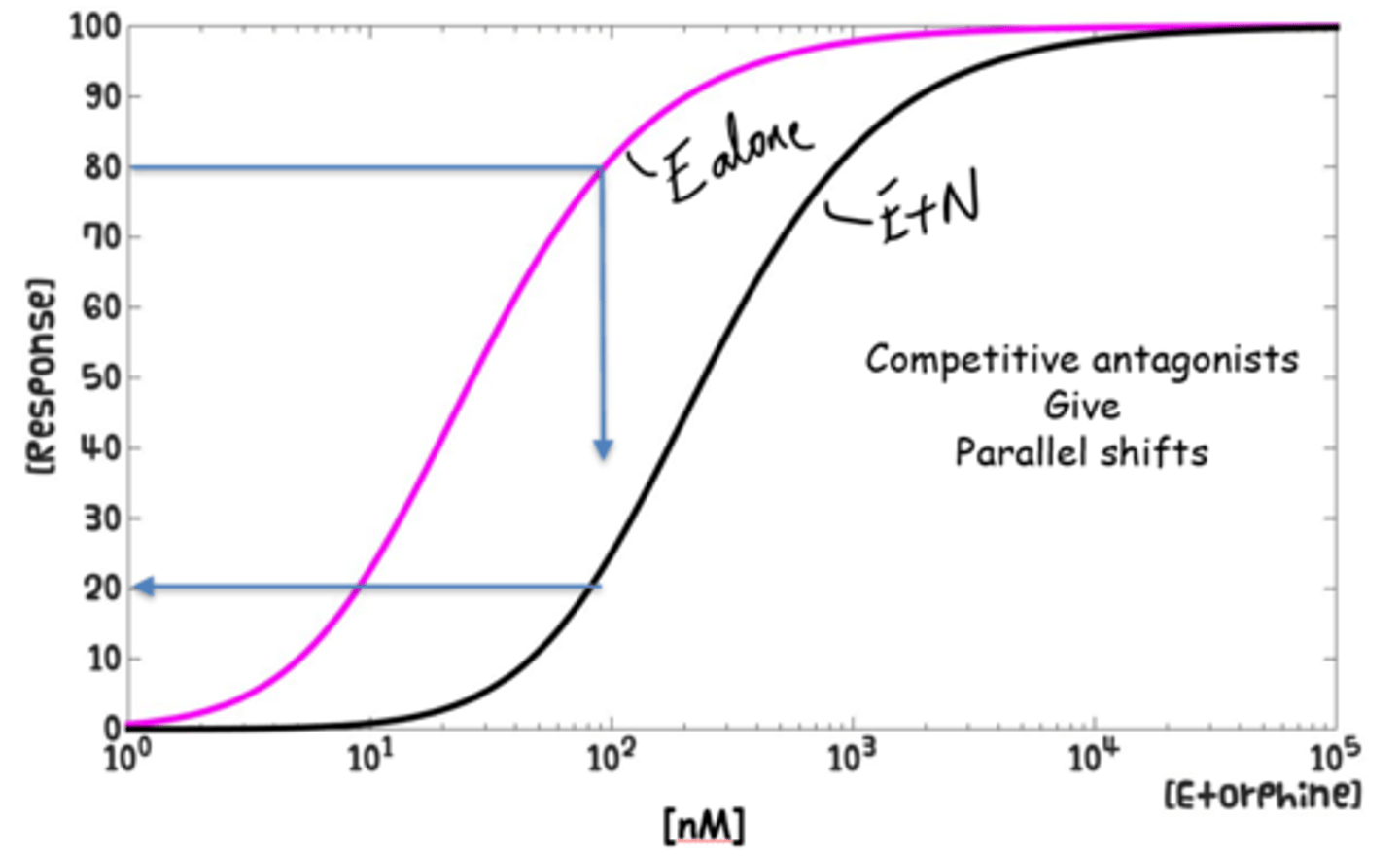
What is the effect of a non-competitive antagonist?
-The non-competitive antagonist binds to an alternate binding site the prevent the binding of the normal substrate and hence means it will never reach Emax
-Means the drug will never reach 100% response on the graph
